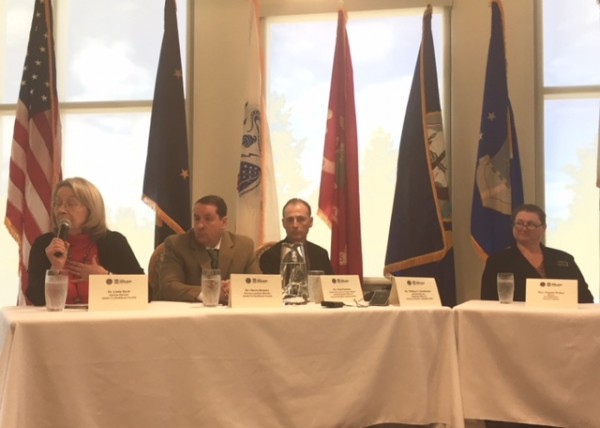
A move by the Obama Administration has freed up money in Alaska to close a funding gap in healthcare for veterans. But officials in Alaska say it isn’t a silver bullet for difficulties vets have faced the last few months connecting with care.
The Choice Improvement Act signed by the President July 31st lets Alaska shift about $20 million between programs in order to restore services that have slowed in recent months.
“Essentially what it did here in Alaska is it gave us the flexibility to get that money moved over from the Choice Act to our non-VA Care Coordination funds,” said Shawn Bransky, interim associate director for Veterans Affairs in Alaska. That money will plug holes in healthcare until the end of the fiscal year on September 30th.
The funding shortfall came in part because of national changes to how the VA pays outside providers for healthcare. The Choice Act passed in August of 2014 is credited with reducing wait-times, but has also proved far more expensive than anticipated.
In Alaska, which served as the model for VA reforms, the program backfired, extending wait-times and suddenly making routine care more complicated.
Before VA funding was turned off eight weeks ago to reign in budget overages, Alaska’s veterans were having difficulty with the third party company, TriWest, handing care under the Choice Program.
Particularly for veterans around Kenai, the Mat-Su Valley, Fairbanks, and Juneau, everything has gotten harder, according to the state’s Director for the Department of Military and Veterans Affairs Verdie Bowen.
“If someone was at one of those clinics and they needed–like, let’s say a radiology appointment–when the funding was pulled they had to go to the Veterans Choice Card, which added another layer that they had to go through,” Bowen said. Prior to the changes that radiology appointment would have been made through the VA, Bowen explained, “And it would be done pretty quick.”
While the $20 million in restored funding will help paying for faster care, the complicated mix of national, state, and local programs isn’t always as nimble as patients and providers need it to be. And even though the money is back, there is still some accounting that has to take place before the effects are felt.
“The local VA is probably doing a stellar job trying to sort that money back out, but it would be difficult for them to turn it back on overnight,” Bowen said. “They’re gonna have to try and work out those issues with each one of those veterans that are in that care system.”
The Alaska VA also has a new interim director, Dr. Linda Boyle, a 25-year veteran of the Air Force.
And next week the nation’s Secretary of Veteran’s Affairs, Robert McDonald, will be in Alaska. He is planning to attend meetings in Wasilla, Kotzebue, and Point Hope.
Zachariah Hughes reports on city & state politics, arts & culture, drugs, and military affairs in Anchorage and South Central Alaska.
@ZachHughesAK About Zachariah




